

 This month we give you a double dose of reading in the BKWine Brief. It’s been two meagre months, in terms of reading the Brief, since we have had so many wine tours to deal with in September and October. But now we are catching up.
This month we give you a double dose of reading in the BKWine Brief. It’s been two meagre months, in terms of reading the Brief, since we have had so many wine tours to deal with in September and October. But now we are catching up.
Lots of articles, lots of news items and recommendations. (And if you are interested in Sweden we also have a full reporting of the 400 new products available in December at the monopoly. But only in Swedish.) We hope that you will find something of interest!
You can find lots and lots of information on our site, what we call BKWine Magazine, hundreds, no, actually more like thousands of articles and news items. A deep source of information on wine on the web.
All of it free. No advertising on it (which is, if not unique, at least rare on non-subscription sites with in depth wine information).
We hope that you like it. But since it is all free and without advertising we would like to ask for a little bit of help from you. Help to spread the information to more wine lovers. Help to recruit more readers. So:
If you like our information, share it with others!
Recommend to your friends to read the BKWine Brief and BKWine Magazine. Make sure they register for a free subscription!
If you’re on Facebook, click on ‘like’ when you see one of our texts that you find is of interest. And don’t forget to ‘share’ it on Facebook too.
Help us by contributing to increasing our readership. Then we can continue to give you the kind of information that you are used to from BKWine.
And last, but not least: Do come on one of our wine tours!
So, a bit about wine:
There is, of course, no one who is able to try wines from all producers that exist around the world. So how do you choose what to drink?
Often you simply stumble over a wine accidentally. You read about a wine or a producer and are curious; you are particularly interested in a particular wine region, a particular style of wine so you look for wines from this region or with that style. You get a recommendation in a wine shop, a restaurant or in a wine bar. There are millions of ways to discover new producers.
The wine industry is very unique in that there is such an abundance of different producers. You just have to accept that you will never know them all.
This also means that recommendations from wine journalists are also a bit randomly given. They recommend wines that they have happened to drink. There are many that they just never taste. We, just like everyone else.
Nothing strange about that. As long as you (and we), the consumer, realize that there are many more out there.
Britt & Per
PS: Recommend to your friends to read the Brief!
– – – – –
What’s on at BKWine Tours
- Chile and Argentina in South America, January 31 – February 15, 2015
- South Africa, February 27 – March 9, 2015
- Bordeaux, April 22-26
For more information please contact us on email or on phone (we’re on French time), or go to our wine travel site on www.bkwinetours.com!
We also make custom designed wine tours – on-demand tours for you and a group of friends, for your company (maybe to scout new winegrowers?), for a special event… We can combine winery visits and wine touring with other activities: gastronomic workshops, visit to an oyster farm, truffles hunting, cheese making, and more. More info on the custom designed and bespoke BKWine wine tours and travel here!
Wine tours in Finnish: We also do wine tours in Finnish. And in German, Norwegian, Spanish…
Do you want the latest news and updates on our wine travel activity? Subscribe here! (Second alternative BKWineTours.com)
From the World of Wine
Another appellation for Bourgogne, Cote d’Or?
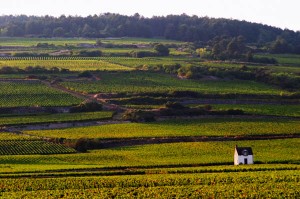 Will Burgundy obtain yet another appellation? The Burgundians already have about 100 appellations, more than any other wine region in France. But this does not deter them. The new appellation now being discussed (again, for it discussed already four years ago) is Bourgogne Côte-d’Or.
Will Burgundy obtain yet another appellation? The Burgundians already have about 100 appellations, more than any other wine region in France. But this does not deter them. The new appellation now being discussed (again, for it discussed already four years ago) is Bourgogne Côte-d’Or.
So far, it is the negociants that are the driving force behind this. The idea is that the appellation “Bourgogne Côte d’Or” will differ from a normal AOP Bourgogne. Côte d’Or certainly is a prestigious sounding name, and it will probably allow the producers to obtain some higher prices. However, the geographical limits have to be set. Côte d’Or is a French département, not just a wine region. But it would obviously be illogical to include wines that are not in the Cote de Beaune or the Cote de Nuits in the new appellation. Which of course does not rule out the possibility that this will happen. More information about Bourgogne Côte d’Or: lavigne-mag.fr
New organic pesticide against rot (bytritis)
UK research company Eden Research has developed an organic pesticide, called 3AEY. The product has now been approved for sale in the EU. 3AEY is made of tea tree oil and lemon juice and is said to be effective against rot. The product has so far been found to have the same protection as conventional synthetic products. Another advantage is that 3AEY is harmless to bees, which is not the case for all organic pesticides.
Grey rot, called botrytis cinerea in Latin, is one of the big problems in the vineyards. For organic wine growers there are few pesticides to use for the moment. But experiments are being carried out with, for instance, citrus extracts. Preventive measures in the vineyards are still indispensable to cope with the rot. Read more: edenresearch.com
Spain, biggest in the world. For vineyards
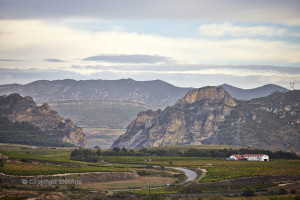 Wine countries outside of Europe are steadily increasing their surface under vines but it is still a European country that can boast the largest vineyard area in the world. It has long been Spain and it is still Spain with 950,541 hectares. That is 13.6% of the total global vineyard area.
Wine countries outside of Europe are steadily increasing their surface under vines but it is still a European country that can boast the largest vineyard area in the world. It has long been Spain and it is still Spain with 950,541 hectares. That is 13.6% of the total global vineyard area.
The largest region is the province of Castilla-La Mancha in the middle of the country with almost half of the vineyards, 464,000 hectares. Of all Spanish wine regions Rioja has shown the largest increase in recent years. Rioja now has over 50,000 hectares.
We strongly believe in Spain as a new big wine tour destination. We had a wine tour there last autumn and will have it on the program again next year (contact us if you are interested). Rioja is again an incredibly dynamic and exciting region to visit. But Spain offers so much more, from Galicia down to Jerez. Read more: vitisphere.com
A Christmas gift recommendation: a good wine book
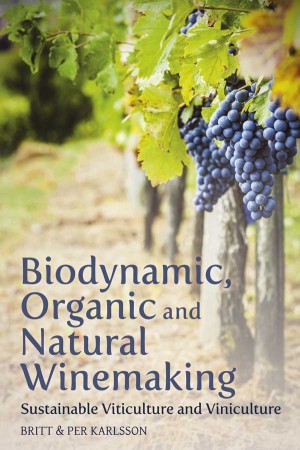 No Christmas is complete without a good book coming from Santa Claus. With environmental issues becoming more and more important perhaps a good book about wine and the environment should be on the wish list? Then we have just the thing for your. Earlier this autumn we had the pleasure of seeing a first of our wine books published in English.
No Christmas is complete without a good book coming from Santa Claus. With environmental issues becoming more and more important perhaps a good book about wine and the environment should be on the wish list? Then we have just the thing for your. Earlier this autumn we had the pleasure of seeing a first of our wine books published in English.
We have done four books in Swedish but this is the first one in translation (and one of very few wine books translated from Swedish). The title is Biodynamic, Organic, and Natural Winemaking, Sustainable Viticulture and Viniculture. The main theme of the book is to explain what organic wine is (and similar “labels”) and to give you an overall understanding of environmental issues around wine. Plus of course a number of recommendations of good wine producers!
Merry Christmas! [divider_flat]
Swedish Top Gold Medal at the Fourth PIWI Wine Awards 2014
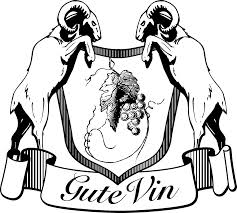 The Swedish winery Gute Vingård, situated on the island of Gotland in the Baltic sea, recently won a Top Gold Medal in the Fourth International PIWI Wine Awards in Germany. This is a wine competition for wines made from fungus-resistant grapes (PIWI stands for the pilzwiderstandsfähige rebsorten). The aim of competition is to make consumers aware of these wines and that the grapes they use are environmentally friendly because they do not require spraying (or at least only very little) against fungus. 80% of all spraying in vineyards across Europe is precisely against fungal diseases.
The Swedish winery Gute Vingård, situated on the island of Gotland in the Baltic sea, recently won a Top Gold Medal in the Fourth International PIWI Wine Awards in Germany. This is a wine competition for wines made from fungus-resistant grapes (PIWI stands for the pilzwiderstandsfähige rebsorten). The aim of competition is to make consumers aware of these wines and that the grapes they use are environmentally friendly because they do not require spraying (or at least only very little) against fungus. 80% of all spraying in vineyards across Europe is precisely against fungal diseases.
Gute Vingård was awarded 96 points and thus the Top Gold Medal for its sweet wine Gute Ädel 2011 made from the Solaris grape, which is highly fungus-resistant. This was the jury’s opinion of the wine: Balanced, dynamic length, fine acidity-sweetness balance, exotic fruits meet fresh apples and spicy ginger. If you happen to be in Sweden you can buy this wine at Systembolaget for around 50 euro (375 ml). More on the competition: piwi-international.de
Champagne with character for the New Year
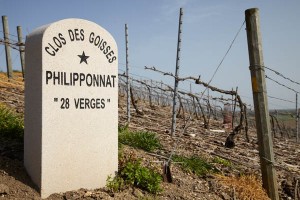 Now that the New Year is approaching it is interesting to note that the market for sparkling wine in the world has grown a lot in recent years. In 10 years, production has increased by more than 40% and consumption by more than 30%. The world wants to drink bubbles and no longer only on New Year’s Eve. However, the New Year is coming up and maybe you are thinking about which champagne to buy. Whichever country you live in there will probably a lot of producers to choose from. Not always easy although the price is probably one important criteria. Here are some suggestions from us. These producers have a very reliable range of champagnes and which of their cuvées to chose is just a matter of how much money you want to spend. We tend to like producers with character and personality and in Champagne that often means small, independent producers or smaller houses.
Now that the New Year is approaching it is interesting to note that the market for sparkling wine in the world has grown a lot in recent years. In 10 years, production has increased by more than 40% and consumption by more than 30%. The world wants to drink bubbles and no longer only on New Year’s Eve. However, the New Year is coming up and maybe you are thinking about which champagne to buy. Whichever country you live in there will probably a lot of producers to choose from. Not always easy although the price is probably one important criteria. Here are some suggestions from us. These producers have a very reliable range of champagnes and which of their cuvées to chose is just a matter of how much money you want to spend. We tend to like producers with character and personality and in Champagne that often means small, independent producers or smaller houses.
- Champagne Fleury: family producer, pioneer of biodynamics in Champagne
- Champagne Philipponnat : great basic brut called Royale Reserve and prestige cuvée Clos des Goisses
- Champagne Roger Coulon, Vrigny: superb blanc de noir and brut nature from this family producer
- Champagne Jacquesson: small house, very innovative, all information you need on back label
- Champagne Tarlant: family business in Vallée de la Marne, most selling cuvée is Brut Zero with no dosage
- Champagne Duval-Leroy: a big and very ambitious house with many interesting things going on, like lowering the dosage and going more and more sustainable and organic
- Champagne Gamet in Mardeuil close to Epernay: very reasonable prices from this high quality family producer
- Champagne Benoit Marguet, Ambonnay: Benoit is organic and even uses a horse in the vineyard
- Champagne Larmandier-Bernier, Vertus: Sophie and Pierre Larmandier are also organic and make some very good champagnes from their old vines in Côte des Blancs.
- Champagne Billecart-Salmon, small prestigious house
Do you want to buy a vineyard?
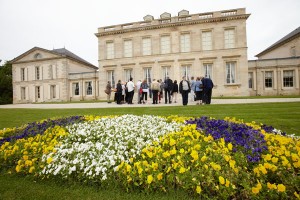 Searching for a vineyard to buy? Are you longing for a life among vines and steel tanks, tractors, regulations and bureaucracy? Then we know exactly where you should start looking. At least if you see yourself making wine in Provence, the Rhone Valley or Languedoc. The newly created company WINE Objectives offer vineyards for sale in these areas and also offers advice to the prospective buyer on financial, administrative and legal matters. Invaluable help no doubt, if you are making this kind of investment. Read more: wineobjectives.com. [divider_flat]
Searching for a vineyard to buy? Are you longing for a life among vines and steel tanks, tractors, regulations and bureaucracy? Then we know exactly where you should start looking. At least if you see yourself making wine in Provence, the Rhone Valley or Languedoc. The newly created company WINE Objectives offer vineyards for sale in these areas and also offers advice to the prospective buyer on financial, administrative and legal matters. Invaluable help no doubt, if you are making this kind of investment. Read more: wineobjectives.com. [divider_flat]
Château Croix Mouton, a Bordeaux Supérieur challenges the big ones
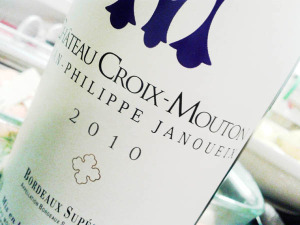 Château Croix Mouton, with the modest appellation Bordeaux Supérieur (and a modest price as well), has received medals, high points and numerous awards. It is always a pleasure when a chateau that is not located in one of the prestigious Bordeaux appellations makes the headlines. And the awards are well deserved. The wine made here is a classic Bordeaux, just the way we want them. Aromas of cedar and black currant, full bodied with tight tannins. Subtle oak and a long finish.
Château Croix Mouton, with the modest appellation Bordeaux Supérieur (and a modest price as well), has received medals, high points and numerous awards. It is always a pleasure when a chateau that is not located in one of the prestigious Bordeaux appellations makes the headlines. And the awards are well deserved. The wine made here is a classic Bordeaux, just the way we want them. Aromas of cedar and black currant, full bodied with tight tannins. Subtle oak and a long finish.
The chateau is situated on the right bank, near the Dordogne River and not far from Fronsac. The chateau was called Chateau Mouton when it was bought by present owner Jean-Philippe Janoueix in 1997. At the time it was run down and the vines abandoned. Renovations started and the name was changed to Croix Mouton after protests from the Chateau Mouton Rothschild (we are not surprised). Today, the chateau makes wine from 19 hectares. Mainly Merlot and some Cabernet Franc grow in soils with mainly clay and limestone. Approximate price for vintage 2010, 14 euro. We had the occasion to discover this wine at our book launch in Gothenburg for our new book on French wines. The event was sponsored with this wine by the Swedish importer.
Vines, a cultural heritage
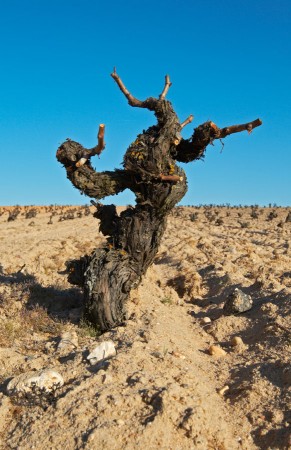 Vines pruned with the traditional alberello method and half-buried in the sand on the volcanic island of Pantelleria south of Sicily, is since a few days back on the UNESCO World Heritage List. This traditional pruning system, called gobelet in French and bush vine in English, is used in a very particular way on the Pantelleria island.
Vines pruned with the traditional alberello method and half-buried in the sand on the volcanic island of Pantelleria south of Sicily, is since a few days back on the UNESCO World Heritage List. This traditional pruning system, called gobelet in French and bush vine in English, is used in a very particular way on the Pantelleria island.
“Pantelleria is a stunning island with steep terraced slopes and the blue Mediterranean Sea as a constant background,” says BKWine’s Åsa Johansson, who recently visited the island. “It is only eight by sixteen kilometres and is closer to Tunisia than Sicily. The climate is tough. The wind is persistent and very strong. The vines need to be grown half-buried in the sand to be protected. Besides vines, only olive trees not higher than low bushes and capers manage to survive here.”
The wine produced is the sweet Passito di Pantelleria. The grape is Moscato di Alessandria, here locally called Zibbio. The grapes are dried in the sun for a few weeks before being pressed. Read more: unesco.org. [divider_flat]
Château Valcombe, Ventoux | Britt’s Wine of the Month
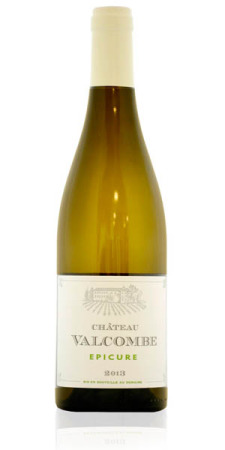 My wine of the month is this month two wines, a red and a white from the same producer, Château Valcombe in beautiful appellation of Ventoux. The château is just at the foot of Mont Ventoux, the highest mountain in Provence, almost 2000 meters high. This is Provence at its very best: pine trees, fields of lavender, cypresses, and cute little villages with terracotta-coloured houses. However, the appellation of Ventoux belongs to the wine region of Rhone Valley, making it the Rhone Valley’s easternmost outpost. Château Valcombe has 30 hectares with partly very old vines. The estate is under conversion to have its certification.
My wine of the month is this month two wines, a red and a white from the same producer, Château Valcombe in beautiful appellation of Ventoux. The château is just at the foot of Mont Ventoux, the highest mountain in Provence, almost 2000 meters high. This is Provence at its very best: pine trees, fields of lavender, cypresses, and cute little villages with terracotta-coloured houses. However, the appellation of Ventoux belongs to the wine region of Rhone Valley, making it the Rhone Valley’s easternmost outpost. Château Valcombe has 30 hectares with partly very old vines. The estate is under conversion to have its certification.
Château Valcombe Epicure Blanc 2013, Ventoux: Dry white wine with good body and a long finish with subtle oak tones, a little peach aromas and refreshing acidity. Quite elegant. The grapes are a quarter each of Grenache Blanc, Roussanne, Clairette and Bourboulenc.
Château Valcombe Epicure Rouge 2011, Ventoux: Warm, spicy and a long taste. Aromas of red berries and ripe fruit. Nice length. A wine with Southern character, excellent for winter meat dishes. Grenache dominates with 60% and is supplemented with Carignan and Syrah. Read more: chateau-valcombe.fr. We recently discovered this wine, at the launch of our new book on French wines in Helsingborg. The event was sponsored with wine from Valcombes’s Swedish importer. [divider_flat]
France is top wine country in 2014; world wine consumption is stable
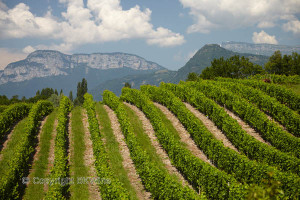 The latest figures from the OIV show that France will again rank first as the world’s largest wine producer. Italy moves down to second place and Spain is third. Globally, it is estimated that the world’s wine production is down 6% in 2014 to reach 271 million hectolitres. Global wine consumption remains roughly at the same level as in 2013 (234 million hl), but there is nevertheless good balance between supply and demand (some wine is used for purposes other than drinking). The world’s vineyard acreage continues to shrink in 2014 and is now down to 7.5 million hectares. Read more about all this in Per’s article on BKWine Magazine: The 2014 statistics on global wine production, wine consumption, vineyard surface area, world grape production, and world trade in wine.
The latest figures from the OIV show that France will again rank first as the world’s largest wine producer. Italy moves down to second place and Spain is third. Globally, it is estimated that the world’s wine production is down 6% in 2014 to reach 271 million hectolitres. Global wine consumption remains roughly at the same level as in 2013 (234 million hl), but there is nevertheless good balance between supply and demand (some wine is used for purposes other than drinking). The world’s vineyard acreage continues to shrink in 2014 and is now down to 7.5 million hectares. Read more about all this in Per’s article on BKWine Magazine: The 2014 statistics on global wine production, wine consumption, vineyard surface area, world grape production, and world trade in wine.
The harvest in Austria: Difficult year saved somewhat by nice autumn weather to give good quality but low quantity
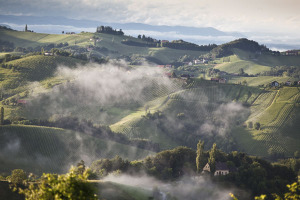 “Difficult weather conditions, persistent rainfalls and fewer sunshine hours demanded scrupulous care and extensive work in the vineyards from Austria’s winemakers this year, so that healthy and ripe grapes could be harvested”, says Willi Klinger, Director of the Austrian Wine Marketing Board, about the Austrian harvest in 2014. As in many wine regions across Europe, Austria had a lousy summer. Thanks to the good weather at the end of the harvest the vintage was still not a disaster, even if the harvest volume is less than normal. Read more about Austria’s harvest 2014 on BKWine Magazine: Elegant fruity wines in Austria 2014 in spite of too much cool and wet weather.
“Difficult weather conditions, persistent rainfalls and fewer sunshine hours demanded scrupulous care and extensive work in the vineyards from Austria’s winemakers this year, so that healthy and ripe grapes could be harvested”, says Willi Klinger, Director of the Austrian Wine Marketing Board, about the Austrian harvest in 2014. As in many wine regions across Europe, Austria had a lousy summer. Thanks to the good weather at the end of the harvest the vintage was still not a disaster, even if the harvest volume is less than normal. Read more about Austria’s harvest 2014 on BKWine Magazine: Elegant fruity wines in Austria 2014 in spite of too much cool and wet weather.
Swedish monopoly Systembolaget makes a profit of 32 million euro in the three first quarters
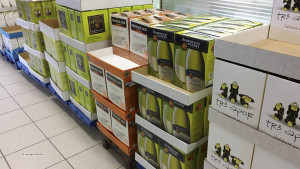 For the first three quarters of 2014 Systembolaget (the Swedish alcohol retail monopoly) made a profit (operating result) of 297 million kronor (32 million euro), a substantial increase over last year, according to a press release from the company. Systembolaget’s revenues (turnover) was for the first nine months in 2014 SEK 19.2 billion (2 bn euro), an increase of SEK 537 million over the same period last year.
For the first three quarters of 2014 Systembolaget (the Swedish alcohol retail monopoly) made a profit (operating result) of 297 million kronor (32 million euro), a substantial increase over last year, according to a press release from the company. Systembolaget’s revenues (turnover) was for the first nine months in 2014 SEK 19.2 billion (2 bn euro), an increase of SEK 537 million over the same period last year.
Systembolaget, and the monopoly supporters, have the habit of implying that Systembolaget is not operating for profit. Therefore, it is perhaps worth emphasizing that Systembolaget actually makes a not insignificant profit. But it is of course relatively easy to turn a profit when you have a monopoly. Comments welcome here on BKWine Magazine: Systembolaget’s profit Q1-Q3 = SEK 297 million.
Horizontal and vertical of Brunello di Montalcino with Count Cinzano from Col d’Orcia
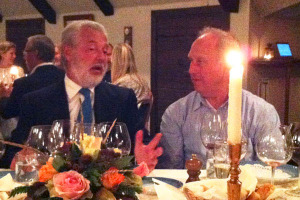 Tenuta Col d’Orcia is one of the best known producers of Brunello di Montalcino in Tuscany. They make several different wines, mainly red wines from the brunello clone of the sangiovese grape. Francesco Marone Cinzano is at the helm of the Col d’Orica winery. When count Cinzano came to Sweden, bringing with him a Tuscan chef, BKWine Magazine sat down with him for a chat and an extensive tasting over a Tuscan dinner. It was both vertical, back to 1968, and horizontal. Read BKWine’s Carl-Erik Kanne’s full report on BKWine Magazine: Tenuta Col d’Orcia, a leading producer of Brunello in Montalcino.
Tenuta Col d’Orcia is one of the best known producers of Brunello di Montalcino in Tuscany. They make several different wines, mainly red wines from the brunello clone of the sangiovese grape. Francesco Marone Cinzano is at the helm of the Col d’Orica winery. When count Cinzano came to Sweden, bringing with him a Tuscan chef, BKWine Magazine sat down with him for a chat and an extensive tasting over a Tuscan dinner. It was both vertical, back to 1968, and horizontal. Read BKWine’s Carl-Erik Kanne’s full report on BKWine Magazine: Tenuta Col d’Orcia, a leading producer of Brunello in Montalcino.
Montalcino is a beautiful area to visit in Tuscany. If you want to truly experience its gastronomy and the brunello di montalcino wines you can join a wine tour to Tuscany with BKWine.
Three nearly identical wines from Robert Mondavi’s To Kalon vineyard show large differences
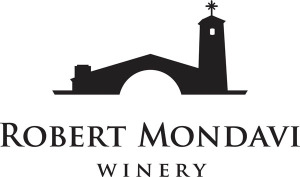 “How is it that the prices of different wines can vary considerably although the wines are produced with grapes from virtually the same vineyard? What creates the quality differences within the same vineyard? When Dana Andrus from the Robert Mondavi Winery came to Stockholm recently, I met him over a tasting of some of Mondavis To Kalon. The aim was to study the differences in quality of wines produced from a single grape variety from the same vineyard.”
“How is it that the prices of different wines can vary considerably although the wines are produced with grapes from virtually the same vineyard? What creates the quality differences within the same vineyard? When Dana Andrus from the Robert Mondavi Winery came to Stockholm recently, I met him over a tasting of some of Mondavis To Kalon. The aim was to study the differences in quality of wines produced from a single grape variety from the same vineyard.”
“In front of us were three different wines produced in a similar manner. All wines were barrel samples of Cabernet Sauvignon from the vintage 2013 from different locations in the vineyard To Kalon. Why are wine quality and price very different, despite the seemingly similar conditions?”
Yes, how can it be that wines from one and the same vineyard can have so different prices? Can there really be any significant differences in taste? Read Ola Öhlund’s full article on BKWine Magazine: To Kalon, a California study in quality, climate and soil in the vineyard.
Rioja emerging from its beauty sleep; Bodegas Roda one of the pioneers
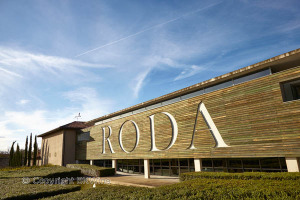 Rioja became enormously popular in the 80s. We discovered wines with an excellent quality at a very reasonable price. Then they disappeared almost as quickly from the spotlight. Today Rioja is about to come back up in the lead as a truly interesting wine region. Gone are the vanilla-dominated, a little tired, old wines. Today you rather see fresh, vigorous, fruity, intense wines, often made with the classic grape varieties, Tempranillo above all. But sometimes also made from vine varieties which have almost been forgotten but now reappears in use.
Rioja became enormously popular in the 80s. We discovered wines with an excellent quality at a very reasonable price. Then they disappeared almost as quickly from the spotlight. Today Rioja is about to come back up in the lead as a truly interesting wine region. Gone are the vanilla-dominated, a little tired, old wines. Today you rather see fresh, vigorous, fruity, intense wines, often made with the classic grape varieties, Tempranillo above all. But sometimes also made from vine varieties which have almost been forgotten but now reappears in use.
A producer who spearheaded this trend with more fruit driven wines is Bodegas Roda, with the winemaker, who is also the winery director, Agustín Santolaya. The business was started as late as 1987, initially with the aim of making world class wines. Read the full article by Ulf Bengtsson on when he met the CEO Augustin Santolaya on BKWine Magazine (including a lot of pictures from La Rioja): From wood to fruit: Bodegas Roda show the New Rioja and contrasts with Ribera del Duero.
Rioja is certainly a wine region to keep an eye (and mouth) open for. That was obvious on our wine tour to Rioja this autumn. If you want to discover the wines, the gastronomy and the beautiful vineyard landscape, then come on a wine tour to Rioja with BKWine.
Will alcohol sales in grocery stores be allowed next year?
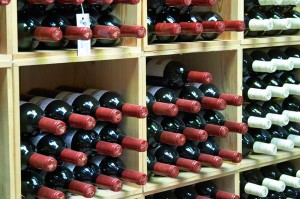 The answer is both yes and no. When we published an article entitled “Alcohol sales to be allowed in grocery stores from April 1, 2015”, the reactions were many and fast. Some cheered, others were angry, some thought it was a fun news item, others felt cheated and upset. Evidently alcohol policy is a sensitive topic. Primarily in Sweden where reactions boomed to incredible numbers. And evidently there are many in Sweden who do not know much about the political parties’ attitude towards the monopoly (all want to keep it). Perhaps we can interpret the many thousands of “likes” such that the Swedish public opinion is starting to veer towards a more liberal attitude? In any case it made a lot of buzz. The Swedish Facebook item about alcohol in grocery stores rapidly received over 4,000 likes and 800 “shares”. The Swedish article on BKWine Magazine has more than 12,000 “likes”… (The English FB post also has a very respectable 1500 likes.) Why this happened with this article is difficult to understand. We have written similar ones in the past (eg The alcohol monopoly to be abolished?) without any significant reactions. Read Per’s original article on BKWine Magazine if you want to know what’s what with alcohol sales in grocery stores: Alcohol sales to be allowed in grocery stores from April 1, 2015.
The answer is both yes and no. When we published an article entitled “Alcohol sales to be allowed in grocery stores from April 1, 2015”, the reactions were many and fast. Some cheered, others were angry, some thought it was a fun news item, others felt cheated and upset. Evidently alcohol policy is a sensitive topic. Primarily in Sweden where reactions boomed to incredible numbers. And evidently there are many in Sweden who do not know much about the political parties’ attitude towards the monopoly (all want to keep it). Perhaps we can interpret the many thousands of “likes” such that the Swedish public opinion is starting to veer towards a more liberal attitude? In any case it made a lot of buzz. The Swedish Facebook item about alcohol in grocery stores rapidly received over 4,000 likes and 800 “shares”. The Swedish article on BKWine Magazine has more than 12,000 “likes”… (The English FB post also has a very respectable 1500 likes.) Why this happened with this article is difficult to understand. We have written similar ones in the past (eg The alcohol monopoly to be abolished?) without any significant reactions. Read Per’s original article on BKWine Magazine if you want to know what’s what with alcohol sales in grocery stores: Alcohol sales to be allowed in grocery stores from April 1, 2015.
Sisseck’s Pingus, chateauneuf from La Nerthe, and a new woman sommelier champion
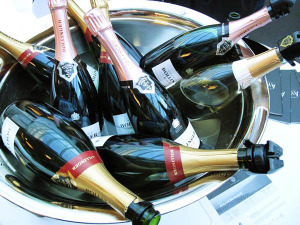 Arvid Nordquist is one of the bigger wine importers on the Swedish market (number twelve among wine importers to be exact). Once a year they arrange a day with a big tasting of their range and many interesting wines. It is also the occasion for the finals of the competition for young female sommeliers, “Lily of the year” (named after Lily Bollinger).
Arvid Nordquist is one of the bigger wine importers on the Swedish market (number twelve among wine importers to be exact). Once a year they arrange a day with a big tasting of their range and many interesting wines. It is also the occasion for the finals of the competition for young female sommeliers, “Lily of the year” (named after Lily Bollinger).
BKWine’s reporter Roland Eriksson was there and selected some of the best wines as well as reports on the sommelier finals on BKWine Magazine: Pingus, Chateau la Nerthe, beer, Bollinger and Maya Samuelsson.
New Zealand is not only Sauvignon Blanc!
New Zealand, the country that is as far away from Sweden (and the rest of Europe) as you can get on this earth, what can they offer in terms of wine? A visit by some 20 New Zealand producers in Sweden gave an opportunity to find the answer. There were many exciting wines. Of course quite a few from the emblematic Sauvignon Blanc, but also many other things. For example some delicious pinot noir, cabernet franc and merlot. BKWine’s reporter Carl-Erik Kanne was there to report on BKWine Magazine: Five wineries and 25 recommended wines from New Zealand.
A quality producer in Palatinate in Germany worth knowing: von Winning
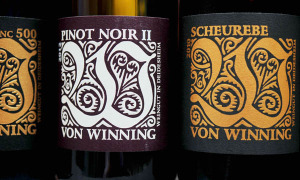 Palatinate (Pfalz) is Germany’s second-largest wine region. Weingut von Winning is one of the more famous quality producers in the Palatinate. Von Winning has a wide range wines, from very affordable wines to really exclusive rarities. When von Winning’s winemaker Andreas Hütwohl came to Sweden he met BKWine’s reporter to presented a large number of their wines. Including a few surprises. Read the full article by Ulf Bengtsson on BKWine Magazine: Do you need a reminder that German wines are delicious? Try von Winning.
Palatinate (Pfalz) is Germany’s second-largest wine region. Weingut von Winning is one of the more famous quality producers in the Palatinate. Von Winning has a wide range wines, from very affordable wines to really exclusive rarities. When von Winning’s winemaker Andreas Hütwohl came to Sweden he met BKWine’s reporter to presented a large number of their wines. Including a few surprises. Read the full article by Ulf Bengtsson on BKWine Magazine: Do you need a reminder that German wines are delicious? Try von Winning.
Champagne Jacquesson: vintage champagne that is not vintage, vineyard wines and other goodies
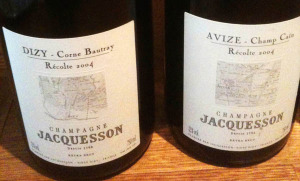 Jacquesson is a champagne house that is different. They don’t do like most others. Instead of making a “house style” with a consistent character year after year and a “cuvée prestige” they make champagnes that underline the vintage variations and special bottlings from small vineyard plots. The house is run by the Chiquet brothers, Jean-Hervé and Laurent. A while ago Jean-Hervé visited Stockholm to present some news for us. BKWine’s reporter Roland Eriksson met Jean-Hervé when he was on a short visit to Stockholm. Read the report on BKWine Magazine: Jacquesson, a champagne house that goes against the current.
Jacquesson is a champagne house that is different. They don’t do like most others. Instead of making a “house style” with a consistent character year after year and a “cuvée prestige” they make champagnes that underline the vintage variations and special bottlings from small vineyard plots. The house is run by the Chiquet brothers, Jean-Hervé and Laurent. A while ago Jean-Hervé visited Stockholm to present some news for us. BKWine’s reporter Roland Eriksson met Jean-Hervé when he was on a short visit to Stockholm. Read the report on BKWine Magazine: Jacquesson, a champagne house that goes against the current.
Jacquesson is one of the quality producers that we sometimes have on the program on our wine tours to Champagne. To taste the wines at the home of producer together with the winemaker is a unique experience that you can get on a wine tour to Champagne with BKWine.
Wine events calendar
Send us an email if you have some event you want on the calendar.
Don’t be an egoist! Share with your friends and other wine enthusiasts! Forward the Brief to your friends! Suggest that they sign up for a free subscription !
© Copyright BKWine







